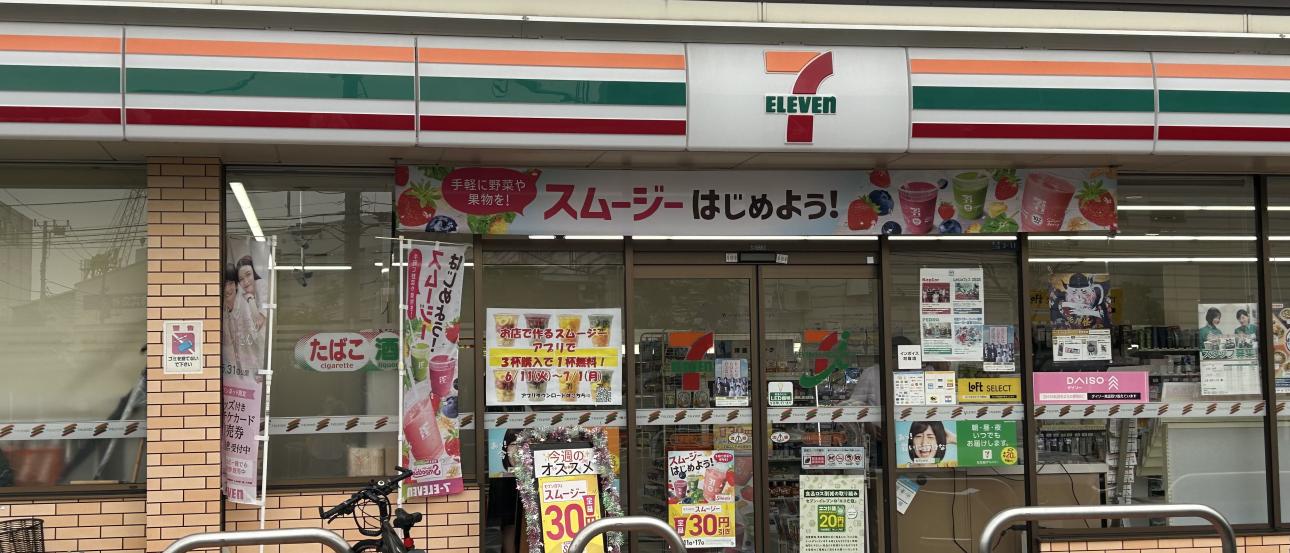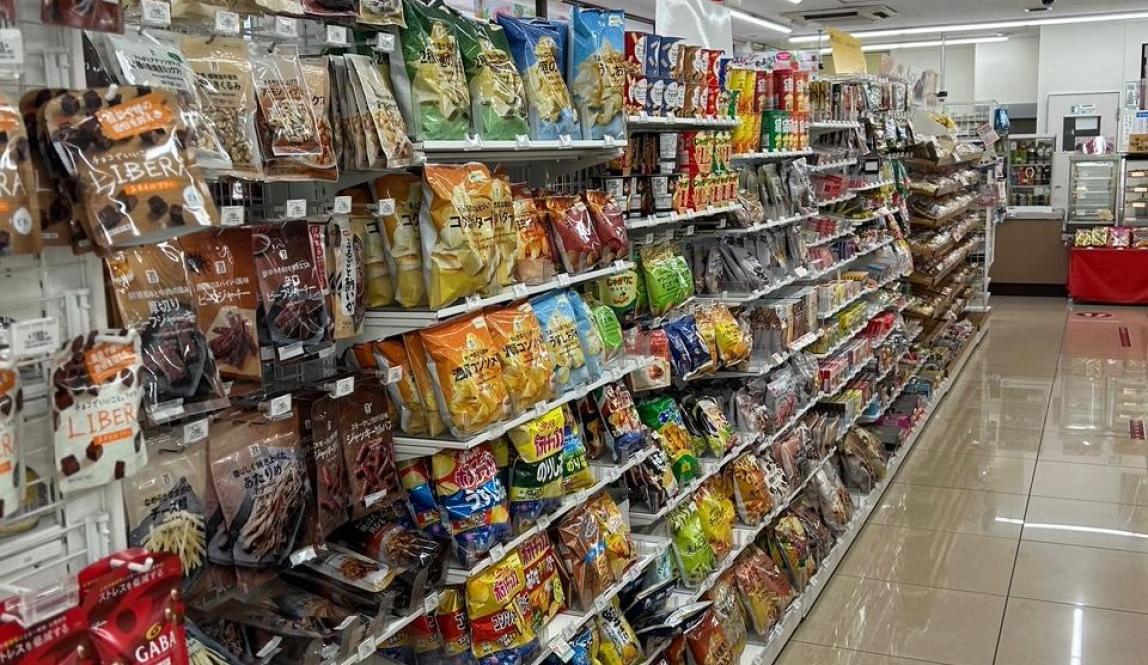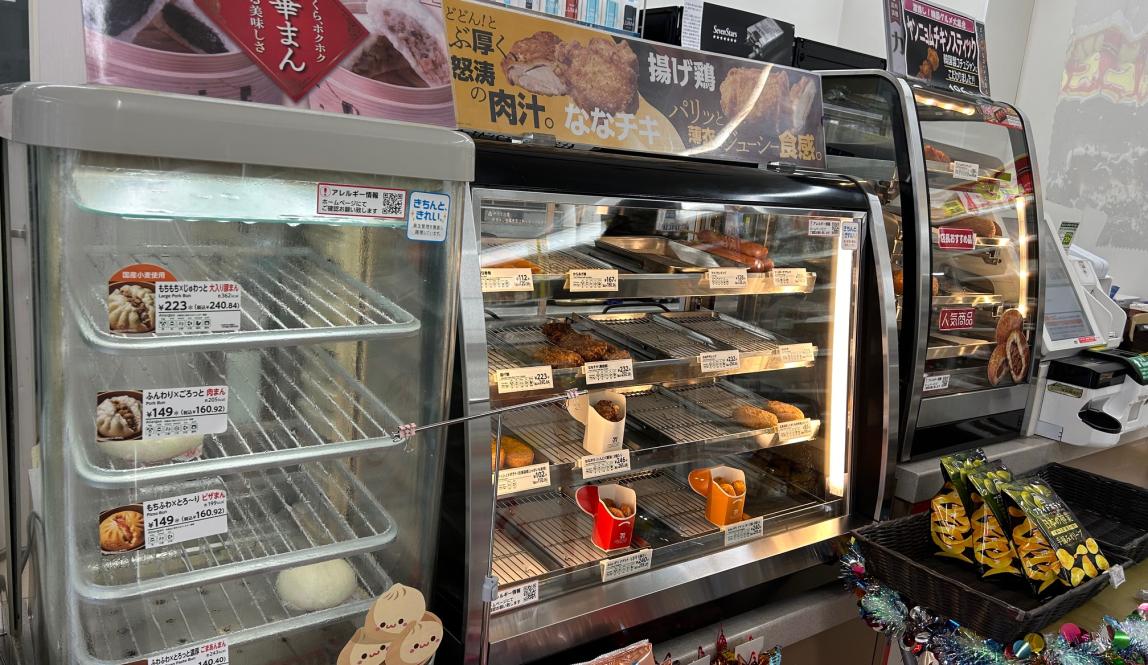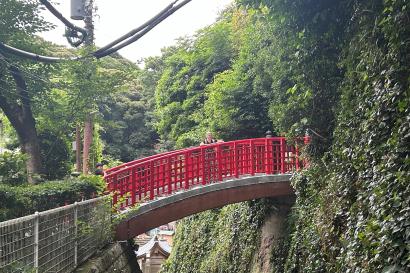Kmart. Seven Eleven. Circle K. It is likely that sometime, somewhere, you have been to a convenience store to grab a soda or a quick snack. You fill up your car with gas; it’s a hot summer day, and you’re suddenly craving a Hyper Freeze from Cumberland Farms.
Like America, convenience stores (konbini) are literally everywhere in Japan: Lawson’s, Family Mart, Mini Stop, and Seven Eleven (of course) are some of the chains I’ve frequented. I’m currently studying abroad in Tokyo and live in a hotel. This means I get to go out to restaurants and cafes for my meals instead of cooking. I love trying new dishes at restaurants and studying in different cafes, but sometimes I just need a snack, a drink, or an easy, fast dinner. And that’s when I turn to the konbinis.
Navigating a convenience store in Japan is pretty similar to stores in America, but it can be intimidating to go in without knowing much about Japanese culture. So, I have created some tips to help you have a fun, successful konbini experience!
1. Helpful phrases
When you enter the store, the workers will likely say “irasshaimase!” This means “welcome.” In return, I usually smile and bow. If you’d like, you can greet the worker by saying “ohayou gozaimasu” (good morning), “konbanwa” (good evening), or just “konnichiwa” (hello/good afternoon).
If you’d like to ask for the cost of something, you can say “Sumimasen, kore wa ikura desuka?” Which means “Excuse me, how much is this?”
Another helpful word is “onegaishimasu,” which is a polite way to say “please.” This is particularly helpful for purchasing hot food at the konbini. If you don’t know much Japanese, you can point to the item you’d like, and just say “onegaishimasu,” and the worker will likely be able to help get what you need. This has helped me a lot, since I am still learning Japanese!
At the checkout, the worker might ask you if you’d like a bag, and will say “fukuro wa irimasuka?” To answer, you can say “hai, onegaishimasu” (yes, please) or “iie, kekkou desu” (no thank you).
If you would like to pay with card, you can say “ka-do o onegaishimasu” (card please). If you would like to pay with cash, you can say “genkin de onegaishimasu” (cash please).
To say thank you politely, you can say “arigatou gozaimasu.”
2. Snacks
The konbinis in Japan have different snacks than American convenience stores. It can be hard to find something you like, especially if there’s a language barrier. Some snacks have English translations, but many do not. I’ve tried many snacks and can recommend some foods you may like to try!
Drinks: When looking for a drink, I usually look at the pictures on the label if I can’t read the kana or kanji. I like fruit juices and teas and haven’t tried one yet that I didn’t like! Some stores have Tropicana, the orange juice brand, if you’d like something familiar. There’s also lots of tea, such as green tea, peach tea, barley tea, rice tea, or wheat tea. A peach tea I love here is called Craftea! It has the perfect amount of sweetness. “Ito en” is a bitter, unsweetened green tea, and is good if you don’t want a sweet drink. There are also Red Bulls and Monster, if you like energy drinks, but they only have a couple flavors. Pocari Sweat is an ion drink, similar to Gatorade. And of course, you can buy bottled water anywhere!
Chips: I haven’t seen Doritos around, but there are some other good chips to try! Tomato Pretz are like tomato or pizza flavored pretzel sticks. Calbee has lots of potato chip flavors. I recommend trying the potato chip sticks! They come in a cup that looks almost like a microwaveable ramen cup.
Candy and sweet treats: The konbini will have their own brand of pre-made sandwiches or baked goods, such as bread, buns/rolls, melon bread, cream filled cakes, and so, so much more. I am fond of the “steamed bread with egg,” which tastes like a muffin. It’s fluffy and sweet, and perfect for a light breakfast! I think most konbinis have them, but if you’re having trouble finding them, Seven Eleven definitely has them! If you love chocolate, Ghana is a great chocolate bar, as well as Meiji! I’ve also seen many fruit gummies. The “Tough Gummy” brand is good! The flavors I tried were inspired by soda flavors, like cola. They are very chewy, as the name implies.
Onigiri, sandwiches, and the premade lunch boxes (bento) are great too! These tend to have English on the label, so you can figure out what type of food is in the container.
Hot food is at the checkout counter, where you can get fried chicken, French fries, corn dogs, steamed pork buns, or fried fish. Different konbinis will have a slightly different selection, so look around to see what’s near you! I highly recommend the pizza buns.
3. Check out
When you check out, there will be a small tray on the counter. This is for cash. If you would like to pay in yen, place the bills and/or coins onto the tray, with two hands if possible. In Japan, it is polite to receive or hand things over with both hands instead of one. The server will also put the change onto the tray, but sometimes may place the change in your hand, from my experience. If you are paying with a card, you can use the card reader yourself. Seven Eleven stores also have ATMs, which are very convenient. I’ve found they don’t charge a large fee for taking out yen, either! Finally, make sure you accept the receipt with both hands if the worker hands it to you, or take the receipt out of the tray. After this, I usually bow and thank the worker before exiting the shop.
In Japan, you have to pay for plastic bags. Even though they only cost a couple yen, I recommend bringing a reusable shopping bag or a tote bag for the snacks, so you don’t have to waste yen on plastic bags. Plus, it’s more eco-friendly!
One last note: if you buy a meal at the konbini, the worker will likely give you chopsticks, silverware, a handwipe, or ketchup/mustard packets, depending on what you buy. You can ask for more of these things if you need to.
I hope that this guide will help you through the konbinis, and I hope you have fun trying all the different snacks. Happy snacking!
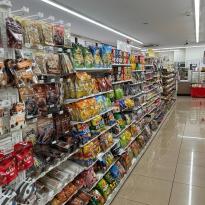
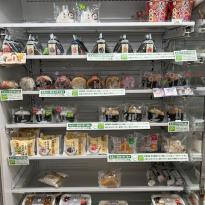


Erica Faucher
My name is Erica Faucher, and I am a junior Medical Microbiology major! I love bacteria and mold, but also languages. I am very excited to be studying Japanese officially in Japan!
